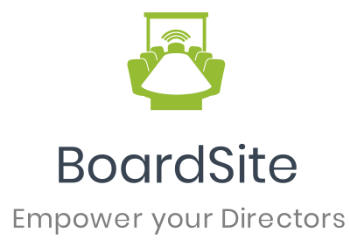In the dynamic landscape in the business world, the role of a board directors is crucial. Tasked with making strategic decisions that can shape the future of an organization. Whether it’s a startup, a non-profit, or a small business, effective decision-making is essential for success. For effective decision-making process of a board of directors, break it down into manageable steps and emphasize the importance of collaboration and strategic alignment.

Understanding the Decision-Making Process
Typically involving several key steps: identifying the issue, gathering information, evaluating options, making a final decision, and reviewing the results. Gathering information includes reviewing board meeting materials to ensure all relevant data is considered. Each step is vital to ensure that decisions are made in the best interests of the organization and that all board members have an opportunity to contribute.
1. Identify the Decision
The first step in the decision-making process is to clearly define the issue or problem that requires attention. This involves:
Understanding the Context:
Board members must grasp the broader strategic goals and objectives of the organization. Executive directors play a key role in setting the strategic goals that guide the board’s decisions. What problem or opportunity is the board addressing? Setting the context helps in aligning the decision with the organization’s mission.
Determining the Scope:
It’s essential to establish the boundaries of the decision. What are the limits of the issue at hand? This clarity helps in focusing the discussion and ensuring that all relevant factors are considered.
2. Gather Information
Once the issue is identified, the next step is to gather relevant data and insights. This involves:
Collecting Data:
Board members should collect information from various sources, including management reports, market research, and stakeholder feedback. This includes reviewing documents such as financial reports and market analyses. This data will inform the decision-making process and provide a solid foundation for discussions.
Conducting Analysis:
Analyzing the gathered data is crucial. This step helps board members understand the problem, identify potential solutions, and assess their feasibility. It’s also important to consider various perspectives to ensure a well-rounded view of the issue.
3. Evaluate Options
With the information in hand, the board can now explore potential solutions. This step includes:
Generating Alternatives:
Brainstorming a wide range of possible solutions encourages creativity and innovation. The more options available, the better the chances of finding an effective solution.
Assessing Pros and Cons:
Each option should be evaluated based on its advantages and disadvantages. Factors such as cost, risk, and potential impact on the organization should be considered. Each option should be evaluated to ensure that board decisions are made with a comprehensive understanding of potential impacts. Using a structured decision framework, like the decision weights model, can help guide this evaluation.
4. Make a Final Decision
After evaluating the options, it’s time to make a decision. This step involves:
Engaging in Constructive Debate:
Open discussions among board members are essential. Each member should have the opportunity to voice their opinions and contribute to the conversation. This collaborative approach fosters a sense of ownership and commitment to the decision.
Formal Voting Process:
Once a consensus is reached, a formal voting process can be employed to finalize the decision. Documenting the decision and the rationale behind it is crucial for transparency and accountability. Minute taking is essential to document the decision and the rationale behind it for future reference.
5. Review and Implement
The final step in the decision-making process is to monitor the implementation of the decision and evaluate its effectiveness. This includes:
Developing an Implementation Plan:
Outlining the steps needed to put the decision into action is essential. This plan should include timelines, responsibilities, and resources required for successful execution. Board administrators play a crucial role in tracking progress and ensuring that the implementation plan is followed.
Tracking Progress:
Monitoring the implementation allows the board to assess whether the decision is achieving its intended goals. Regular updates and check-ins can help identify any challenges that may arise.
Evaluating Outcomes:
After the decision has been implemented, it’s important to evaluate its effectiveness. Did it achieve the desired results? What lessons can be learned from the experience? This reflection can improve future decision-making processes.
The Importance of Collaboration and Strategic Alignment Among Board Members
Effective decision-making in the boardroom is not just about following a structured process; it’s also about building collaboration among board members. Each member brings unique perspectives and expertise, which can enrich discussions and lead to more informed decisions. Encouraging open dialogue and creating an environment where all voices are heard is essential for building consensus and commitment. Fostering a positive board culture ensures that all members feel valued and are encouraged to contribute.
Moreover, aligning decisions with the organization’s strategic goals is crucial. Every decision made by the board should contribute to the long-term success of the organization. This alignment ensures that resources are allocated effectively and that the organization remains focused on its mission.
Efficient and Effective Board Meetings
An effective board meeting is one that is meticulously planned, efficiently executed, and highly productive. It is a forum where all board members are engaged, well-informed, and able to contribute meaningfully to discussions and decision-making processes. The foundation of a successful board meeting lies in a clear and well-structured agenda, comprehensive meeting materials, and a skilled board chair who can facilitate discussions and keep the meeting on track.
Effective board meetings are pivotal to the success of any organization. They provide a platform for board members to deliberate on strategic issues, make informed decisions, and oversee the organization’s governance. A well-conducted board meeting builds trust, encourages collaboration, and drives the organization towards its goals. Every meeting is purposeful and productive, boards can significantly enhance their decision-making capabilities and overall effectiveness.
Board Meeting Roles and Responsibilities
A board meeting involves several key roles and responsibilities that are crucial for its success. The board chair plays a central role in facilitating the meeting, setting the agenda, and ensuring that all board members have an opportunity to contribute. The chair must be adept at steering discussions, managing time effectively, and maintaining focus on the agenda items.
The corporate secretary is responsible for preparing the meeting materials, taking minutes, and ensuring that all necessary documents are distributed to board members in a timely manner. This role is vital for maintaining accurate records and ensuring that the board’s decisions are well-documented.
Board members themselves have a responsibility to come prepared for the meeting. This involves reviewing the meeting materials in advance, being ready to discuss agenda items, and showing respect for their fellow board members’ opinions and contributions. The CEO or executive director is tasked with providing updates on the organization’s performance, answering questions, and seeking feedback from the board. This collaborative approach ensures that the board is well-informed and able to make decisions that are in the best interest of the organization.
Effectively Use Technology To Streamline Board Roles and Responsibilities
A board meeting involves several key roles and responsibilities that are crucial for its success. To enhance the effectiveness of board meetings, at BoardSite we offer a range of features that align with the key roles and responsibilities of board members. The board chair plays a crucial role in facilitating the meeting, and can utilize the Board Meeting Viewer to keep discussions focused.
By employing the Agenda & Minutes Builder, the chair can create and share the agenda in advance, ensuring that all members are prepared and have the opportunity to contribute. The corporate secretary is responsible for preparing meeting materials, and can take advantage of the Document Manager to store and organize necessary documents for easy access.
Building a culture of respect among members is essential, and the Online Voting feature can significantly enhance this process by providing a secure and efficient way to record votes. Traditional voting methods, such as email chains, can be tedious and often lead to confusion with “reply all” responses. Address questions and concerns, using a Q&A session can be facilitated through Committee Pages, allowing for targeted discussions.
Integrating these features, organizations can create a structured and collaborative environment that enhances communication and decision-making during board meetings.

Leveraging Technology for Enhanced Decision-Making with Board Meeting Materials
Technology plays a significant role in enhancing the decision-making process. Board management software can streamline communication, facilitate information sharing, and provide a centralized platform for collaboration.
The right board portal provides a secure and user-friendly platform for managing board activities. For organizations using a board portal like BoardSite, these tools can help board members stay organized, access relevant documents, and engage in discussions more efficiently.

